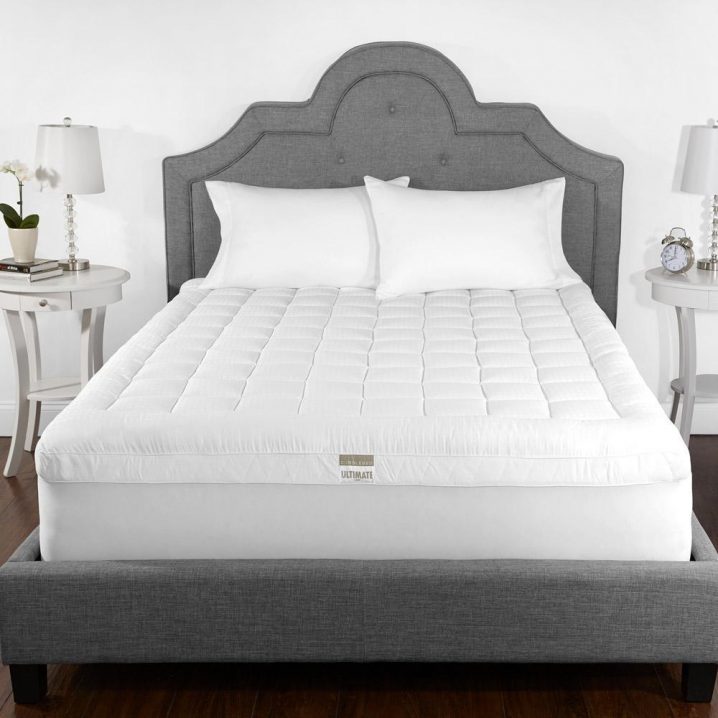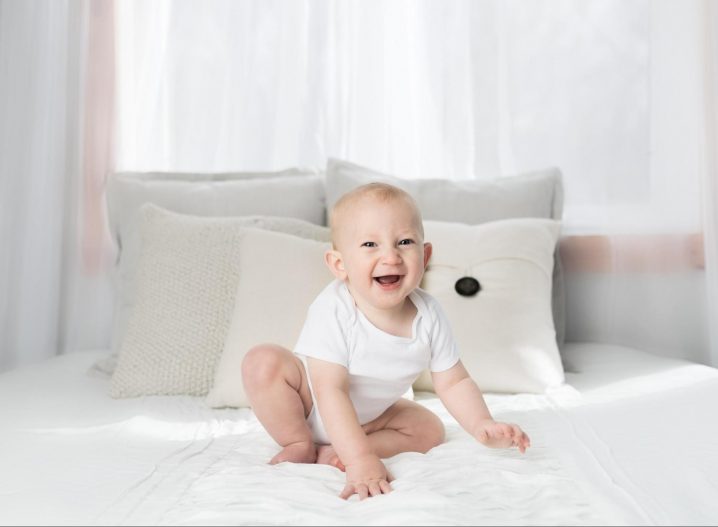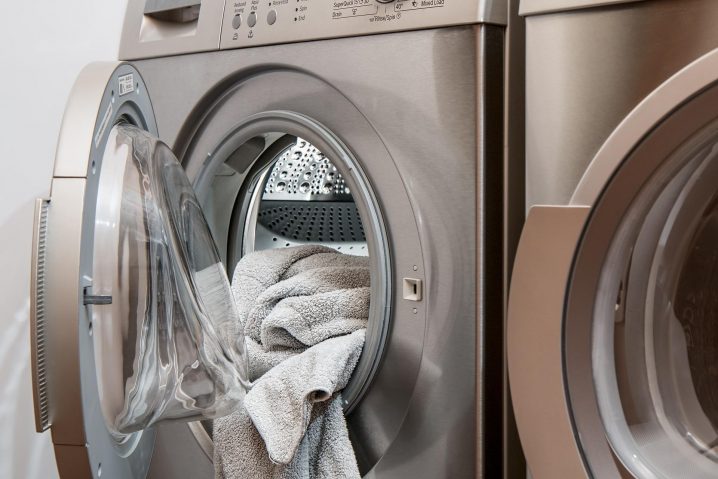
Have you just upgraded your bedroom with a new mattress? Or are you only thinking about it since your old mattress doesn’t feel that comfortable anymore?
Whatever your case, you might consider buying a mattress protector or mattress pad.
The key thing you need to know for the start is that these two bedding items serve for different purposes in your bedroom. And now, we’re about to find out which of them will be useful for you.
What Is a Mattress Pad?
A mattress pad is a piece of material placed directly on top of a mattress and below sheets. It serves as an additional layer of cushioning for an old or uncomfortable mattress. Both the cover and the filling can be made from different materials, such as foam, latex, cotton, feather, bamboo, etc.
“The choice of the filling will affect not only the overall feel of your upgraded bed (e.g. firmer or softer) but also temperature regulation, durability, motion isolation, noise, odor, and other features.”
There also are heated and cooling mattress pads. The former are often chosen by people like me, who hate those chilly winter nights, or those who need a therapeutic heat effect to help their muscles relax. The latter are a reasonable purchase for those who tend to sweat during the night, as they are typically made from gel-infused memory foam and offer good air circulation.
Types of Mattress Pads
There are basically three ways mattress pads can be made:
- Fitted. These are designed similarly to fitted sheets. When you pull the sides and corners down under your mattress, they stay accurately in place. However, you should shop for a fitted pad carefully and choose the one that will have pockets large enough to wrap over your mattress (you should first measure its thickness for that).
- Strapped. These have bands of fabric in each of the four corners, which should be put under the mattress in order to hold the mattress pad in place. Although they sit on top pretty well, they might still move along with your movements and therefore require you to adjust them occasionally.
- Free. These are commonly referred to as mattress toppers. They just lie on the surface of your mattress freely and, consequently, require frequent readjustments.
Who Should Use a Mattress Pad?
Briefly, you need a mattress pad if you feel like your current mattress is too firm for you or not supportive enough.
But here’s the thing:
Most pads today are designed with some protective features too.
If waterproof and hypoallergenic, they can shield your mattress from wearing out and becoming a home to dust mites. Thus, getting a mattress pad is a good idea for people who:
- can’t buy a new mattress (students living in dorms, healthcare facility residents, etc.);
- want to change the way their current mattress feels (e.g. make it softer or firmer) without spending a lot of money;
- want some additional protection from spills and stains on the mattress;
- are not satisfied with the level of motion isolation or temperature regulation of their current mattress.
“Couples with different sleeping preferences often use a Twin XL mattress pad on their old mattress as an alternative to buying a new dual-sided King mattress.”
What Is a Mattress Protector?

It’s not hard to guess the main purpose of a mattress protector from its name. This bedding item is usually made from terry cotton, polyester, or other material that absorbs fluids very well, which is why protection from spills or child/pet accidents is its key feature.
Here’s the thing:
Warm and humid places are a good environment for dust mites to live and multiply.
So, a waterproof cover on your mattress will not only keep it clean for a longer time but also protect you from one of the most common allergens – dust mites. Besides, a mattress protector will minimize the effects of friction thus reducing tear and wear.
“Mattress protectors are typically machine washable, so you can get rid of stains quickly and easily. Some of them can repel the liquid so that you wouldn’t even have to take your protector off your mattress and wash. Just mopping the water up with a piece of cloth might be enough.”
Types of Mattress Protectors
Similarly to mattress pads, there are three ways how protectors can be designed:
- Encasement. These cover the mattress completely, ensuring protection from all sides. Keep in mind that putting them on and off to wash will require much effort since you’ll have to lift your mattress each time. However, encasement protectors can be quite convenient for those who flip their mattress occasionally.
- Fitted. These feature elastic edges that have to be pulled under the mattress, just like with fitted sheets. Most models on the market have rather large pockets to accommodate even the thickest mattresses.
- Strapped. These are cheaper and mostly aren’t water-resistant. I would say it’s a basic option to protect your bed from traditional wear and tear.
Who Should Use a Mattress Protector?
Briefly, you need a mattress protector if you want to shield your new or old mattress from any possible damage and extend its lifespan. Also, you can read the research from Happysleepyhead to find the most suitable mattress protector for yourself.
Here’s the kicker:
Since mattress protectors are pretty thin, they don’t affect the comfort and support levels of your bed.
- want an additional protection for an expensive mattress but don’t want to change the overall feel of their bed;
- have children, pets, or other sources of potential liquid damage;
- are prone to sweating but want their bed to stay clean;
- are allergy-prone and want to minimize the chance of their bed becoming a breeding ground for dust mites;
- love the motion isolation or temperature regulation properties of their current mattress.
“If your mattress features a special cooling technology, rest assured you will still feel it through your protector. If you choose a quality one, of course.”
Quick FAQ
Will a mattress protector or pad help me with back pain?
You don’t need a mattress protector solely for the purpose of reducing back pain. But a mattress pad can help you here. You can opt for a firmer pad if your current mattress is too plush or for a softer pad that will provide more cushioning to your current firm mattress. In order to know which option will work, you should understand the cause of your back pain and make sure your current bed is one of the reasons.
Will I sleep hot because of an additional layer of material on my bed?
This depends entirely on the type of material used and its quality. It is reasonable to assume that a piece of material covering the mattress on top and sides or fully will affect the air circulation and heat retention. However, most models today are wisely made to avoid that and ensure your comfortable cool sleep.
“Cotton is a more breathable fabric than, for example, polyester. Therefore, it will sleep cooler.”
Besides, there are mattress pads made from gel-infused memory foam, which is known for its cooling properties. Getting an item like this will guarantee you won’t sleep hot.
Do I need a mattress pad or protector for a new mattress?
Most people use a mattress protector with a new mattress, especially if it’s a luxury, expensive model. Thus, they get their mattress protected from spills, dust, moisture, allergens, etc. for an extra $20-30 only.
You might want to use a mattress pad for your new bed in case you’re not satisfied with the levels of comfort the mattress provides (assuming you can’t return it because of some warranty issues).
“Mattress warranties are usually null and void if there is any damage in form of stains. Thus, a mattress pad or protector can help you keep the warranty.”
How do I clean them?

While almost all protectors are machine washable, pads sometimes are not, depending on the material. The ones that can’t be washed in a washing machine can still be cleaned manually by wiping, vacuuming, and washing by hands.
Note this:
Machine washing and drying might make your bedding items deteriorate quicker. That’s why it’s important to follow the care instructions precisely.
Conclusion
There’s actually a major disambiguation as for what mattress pads and mattress protectors exactly are. A term “mattress toppers” is often used interchangeably as a synonym to both. Manufacturers define them each in its own different way. Thus, an item under a name of “mattress pad” on the product page can easily turn out to be a mattress protector when it arrives at your door.
So, you should carefully read product descriptions when shopping. Hopefully, the information given above will help you.



